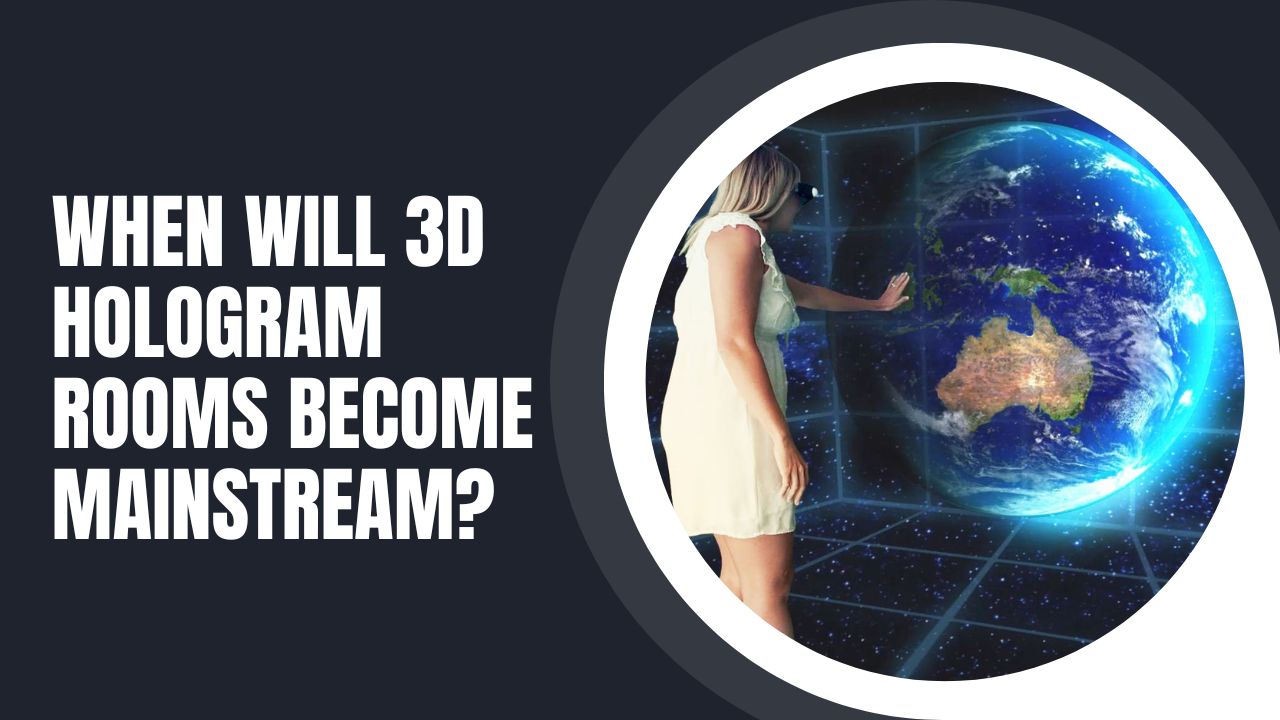The holographic technique has long been depicted as a sign of modern civilizations. From Star Wars’ iconic holographic interactions to the Star Trek Holodeck, the procedure of 3D hologram rooms has occupied the expectation of audiences for decades. Explore and select the most appropriate 3D holographic displays with one of the leading holographic displays i.e., Vision3D. But when did this futuristic technique become an originality in our daily lives? In this write-up, we will browse the recent state of holographic technique and look into the causes affecting its journey towards primary selection.
The Current Framework of Holographic Technology
Although holography has been regarded as a futuristic technology intended for such a field, it has advanced tremendously in recent years and is already in use. The original or preceding to the creation of the Room 3D model is the projection of 3D images by the optical interferences, and today improved technologies like the volumetric displays and the augmented reality (AR) are used to improve the holographic structures.
Volumetric displays create images in space and are fully interactive to the extent that one can view objects or graphics from different angles simply by walking around them. These displays employ methods such as utilizing light to create ribbons to scatter them across the room or projecting images onto a series of spinning mirrors with high RPM.
On the other hand, AR places digital information into the real environment in a way that appears as if they are part of actual reality and can be viewed through the screens of mobile devices or glasses. The general public today is actively using applications like Pokémon GO that put millions of users into the experience of augmented reality and digital overlays of content into the physical world and in this way prepared them for what the more complex and immersive holographic experiences will be like.
Features of 3D Hologram Rooms
- Immersive Environment – The 3D holographic suit develops a completely engaging atmosphere that internet users experience as they are the components of the holographic world.
- Realistic Visuals – Holographic projections provide original and lifelike observations, improving the user experience.
- Interactive Elements – Users can engage with holographic objects and components within the room, attaching an interaction measurement to the familiarity.
- Multi-Sensory Experience – Encompassing sound impacts and possibly even strategic review, these rooms offer a multi-sensory familiarity.
- Customizable Content – Content displayed within the rooms can be modified to fulfill different purposes like education, entertainment, or business demonstrations.
- Collaborative Spaces – Such rooms can commence association among internet users, enabling them to perform together within the holographic atmosphere.
- Cutting-Edge Technology – 3D hologram rooms use top-notch techniques, often including modern sensors, projectors and software to develop holographic familiarity.
Versatility – Such rooms can deliver different purposes like gaming, training, simulation and entertainment, developing them into flexible spaces for various applications.
Challenges on the Road to Mainstream Adoption
As the possibility of holographic technique is unavoidable, different troubles must be controlled before 3D hologram rooms can become guidelines.
- Technical Limitations – Developing engaging and interacting holographic familiarities needs controlling technical challenges like gaining high-resolution imagery, real-time depiction of complicated scenes and smooth engagement with holographic objects. Recent hardware restrictions and computational necessities place important limitations on providing a truly engaging holographic atmosphere.
- Cost and Accessibility – The implementation and development of the holographic technique needs substantial financial funding, restricting its accessibility to a little. Plus, the price of customer-grade holographic equipment remains restrictively maximum for broader naturalization. Manufacturers must explore methods to decrease production prices and make the technique more cost-effective to the average customer for holographic rooms to become commonplace.
Content Creation – The success of any fresh technique depends on the presence of alluring content. Developing interactive holographic familiarities needs a combination of technical expertise and captivating creativity. Till now, industries have felt the lack of content developers’ skills and equipment to generate high-quality holographic content. Maintaining this space will be significant in bringing the selection of holographic technology.
The Path to Mainstream Adoption
Thus, the possibilities we offer below indicate that at present Room 3D model can be considered, as a perspective for delivering virtual interiors of real rooms to everyday consumers.
- Advancements in Display Technology – Innovations in type and indications including the resolution, refresh rates and angles of the display, are fundamental in developing real-life holographic experiences. Modern techniques continue to blurb and yearn for truth with the help of augmented reality and holographic displays that are naturally recognized by Microsoft with the help of their HoloLens headset, as well as by Magic Leap.
- Investment in Research and Development – There is positive business funding for holographic technology primarily by research institutions and large tech firms. They are exciting because they fuel innovation in every layer of the holographic sphere, including app development, equipment design, content creation apps, etc. From current trends, it would not be wrong to assume that there will be more such solutions hit the mass market as technology advances and gets cheaper.
Integration with 5G and Edge Computing – The adoption of 5G networks and improvement of edge computing for holographic communications helps in providing real-time high bandwidths. 5G and low latency will enable real-time holographic streaming while edge computing will provide the data processing required to deliver a high number of iterations at a low latency.
Conclusion
So, while 3D hologram rooms may still observe a further pattern, they are slowly advancing nearer to major selection. With recent developments in display technique, enhanced investment in development and exploration, and the association of top-notch techniques such as edge computing and 5G, the restrictions to enter the holographic technique are usually disappearing. To know more about holographic displays, connect with the Vision3D customer care number – +91-8971953451.
